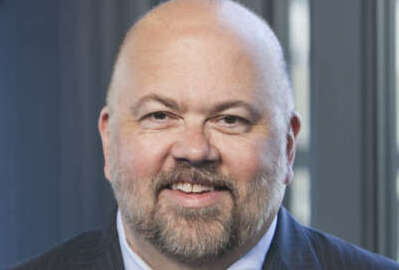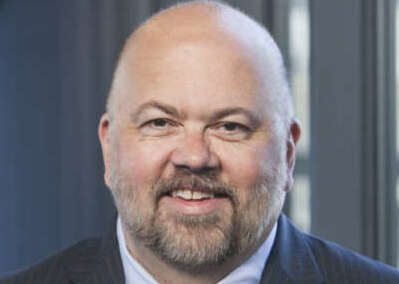
Should we care the civil service is becoming fractured?
Traditionally, most knowledgeable folks thought fracturing the federal workforce into different hiring, classification and pay systems, or “Balkanizing” the...
This column was originally published on Jeff Neal’s blog, ChiefHRO.com, and was republished here with permission from the author.
When most people who know something about government think of the federal civil service, they think of workers covered by the General Schedule and Title 5 of the United Sates Code. Proposals for reform typically have that population in mind. Traditionally, most knowledgeable folks thought fracturing the workforce into different hiring, classification and pay systems, or “Balkanizing” the federal workforce was a bad idea.
Fragmentation is nothing new
I am not so sure that fracturing is a bad idea. Let’s start with getting the idea of a homogeneous civil service out of our heads. It is not, and has not been for many years. Here are a few numbers:
| Nonpostal federal employment | 2,075,006 |
| GS/GM/GL | 1,430,297 |
| Prevailing Rate (Blue Collar) | 187,250 |
| White Collar Non-GS | 416,935 |
| GS Equivalent | 40,123 |
It is apparent that only three-quarters of the federal workforce are in a GS or equivalent plan. That is not a new development. Although we have seen moves to pay banding in some agencies and occupations, most of those pay bands are based on the General Schedule and the number is not a large as people typically think it is. The blue collar workforce is actually much smaller than in the past. In the 1950s and 1960s, there were more than 450,000 blue collar employees in a workforce of 1.9 million. So, from the perspective of pay and classification rules, the federal workforce is no more segmented today than it was 60 years ago. The segments are different and there may be more of them, but the big block of GS employees is close to the same number.
Another way of looking at it is the hiring/firing authorities. There is a bit more variation here:
| Permanent Appointments | # of Employees |
| Career/Career Conditional | 1,381,112 |
| Excepted Service Schedule A | 56,620 |
| Excepted Service Schedule B | 4,192 |
| Excepted Service Schedule D | 9,216 |
| Excepted Service – Executive | 27 |
| Excepted Service – Other | 449,179 |
| Senior Executive Service – Career | 7,162 |
| Senior Executive Service – Noncareer | 570 |
That big block of “Other” excepted service employees will probably draw your attention. Almost half are in the Veterans Affairs Department (222,913). Another 53,000 are in the Defense Department (many in reserve technician jobs) and another 63,143 are in the Homeland Security Department. Over 61,000 of the DHS employees are in the Transportation Security Administration.
The various types of appointing authorities cover a wide range of classification and pay systems. Many are GS, but others are not. Examples of the non-GS employees include medical personnel in VA and Transportation Security Officers in TSA.
Why do agencies want their own classification, pay or hiring rules?
Most agencies do not put considerable time and effort into efforts to get their own authorities just to be different. They are trying to solve legitimate problems that get in the way of accomplishing their missions. Here are three examples of the most common problems they encounter:
- Inability to hire needed talent. When agencies consistently have difficulties with getting talent on board, they look for solutions. The most common of those is direct hire authority. For many agencies, direct hire is the holy grail of reform. They see it as the solution to many of their problems, with veteran preference being the biggest one. In fact, if veteran preference did not exist in its current form, there would be little benefit to direct hire authority. The sad fact is that direct hire is not a panacea. It is a great solution to a small set of problems, but it does nothing to address other issues that may contribute more to agency hiring woes. One observation from many policy folks at the Office of Personnel Management is that agencies that are able to obtain direct hire authority frequently make little use of it. That is because the problem they are trying to solve is not helped at all by direct hire.
- Pay. When agencies look for alternative classification and pay systems, they are trying to find ways to compete for talent in a labor market where government pay is not adequate to attract talent. In some cases the problem is pay for full-performance level employees, while at other times it is entry-level pay. The GS system is not flexible enough to deal with pay disparities. Pay may also lead to retention problems due to the GS being so rigid once someone is on board.
- Rewards. The inability to adequately recognize good or great performance, and to avoid pay increases for poor performers, drives some hiring, retention and morale problems.
Why have a single civic service system?
There are many arguments supporting the idea of a single civil service system that applies to every agency. Chief among them are the need to have a set of common rules that enables movement from one agency to another, and the need to make the civil service more understandable to the talent that government needs to hire. A 2014 Partnership for Public Service report described the need this way:
Unlike the private sector, the government’s success is judged by how it serves the broader public interest, promotes the general social welfare and protects society and its citizens. The federal government also aspires to be a model employer and an example for others, with a long and respected tradition of placing a high value on merit, nonpartisan independence, preference for our veterans, equal employment opportunity and nondiscrimination, due process and collective bargaining.
A modernized civil service system should continue to be based on these long-held principles. It should have the consistent policies and procedures and level playing field that are characteristics of a single enterprise, but also be flexible and adaptive enough to accommodate the wide variety of agency missions, cultures and constituents.
Can we put Humpty Dumpty back together again?
I understand the interest in a single civil service system, but the truth is that we have not had a single civil service system for decades. Whether based on classification and pay, hiring and retention practices, or other characteristics, the civil service is already fractured. Agencies that have their own rules are unlikely to have an interest in moving to a new government wide approach. More significantly, it may not be in their interest, or that of the taxpayers, to do so.
We can view the federal government as a single enterprise and still accept that it has so many varying missions that a single set of civil service rules is not realistic. Can we use the same rules to hire physicians, cybersecurity experts, contract specialists, clerks, budget analysts, housing policy experts, economists, electricians, and any other of the 400 or so occupations in the federal government? Does the Department of Defense have the same needs as the Department of Education? Or Homeland Security? Or the National Weather Service?
I think the answer is no. The missions and occupations and the talent for which they compete are so varied that one set of hiring, classification and pay rules simply does not work. It is either so complex that no one can understand it, or it is so general that it meets the needs of no one.
If we accept that we need different rules to compete for talent, the real question should be whether the variations in rules should be driven by the organization or by the occupation. Should Defense have one set of rules and HUD another? Or should everyone use the same set of rules for cybersecurity jobs, and another set for administrative occupations? I believe the answer is that the rules should be driven by the competition for talent. That would lead to rules based on the type of job rather than the agency.
The reason I believe that to be true is that the very arguments agencies use to defend requests for agency-specific rules are almost always based on the jobs. Large agencies such as Defense, Veterans Affairs and Homeland Security have so many occupations that they would be unable to apply a single set of rules to everyone without encountering the same problems we have today. If every agency gets to do what it wants for every occupation, the result would be far more fragmented than anything we see today.
If we want to solve this problem, we should accept that fracturing has already occurred, and that it is going to continue. Once we accept that reality, we can move forward with doing it in a more deliberate and less ad hoc manner. As for the argument that the civil service should have the characteristics of a single enterprise, that can be addressed by retaining a few core ideas that would apply to every federal worker, regardless of agency or occupation. Those ideas — merit based hiring and retention, an oath of allegiance to the Constitution of the United States, and a nonpolitical civil service — are neither new nor radical.
Jeff Neal is a senior vice president for ICF and founder of the blog, ChiefHRO.com. Before coming to ICF, Neal was the chief human capital officer at the Homeland Security Department and the chief human resources officer at the Defense Logistics Agency.
Copyright © 2025 Federal News Network. All rights reserved. This website is not intended for users located within the European Economic Area.



